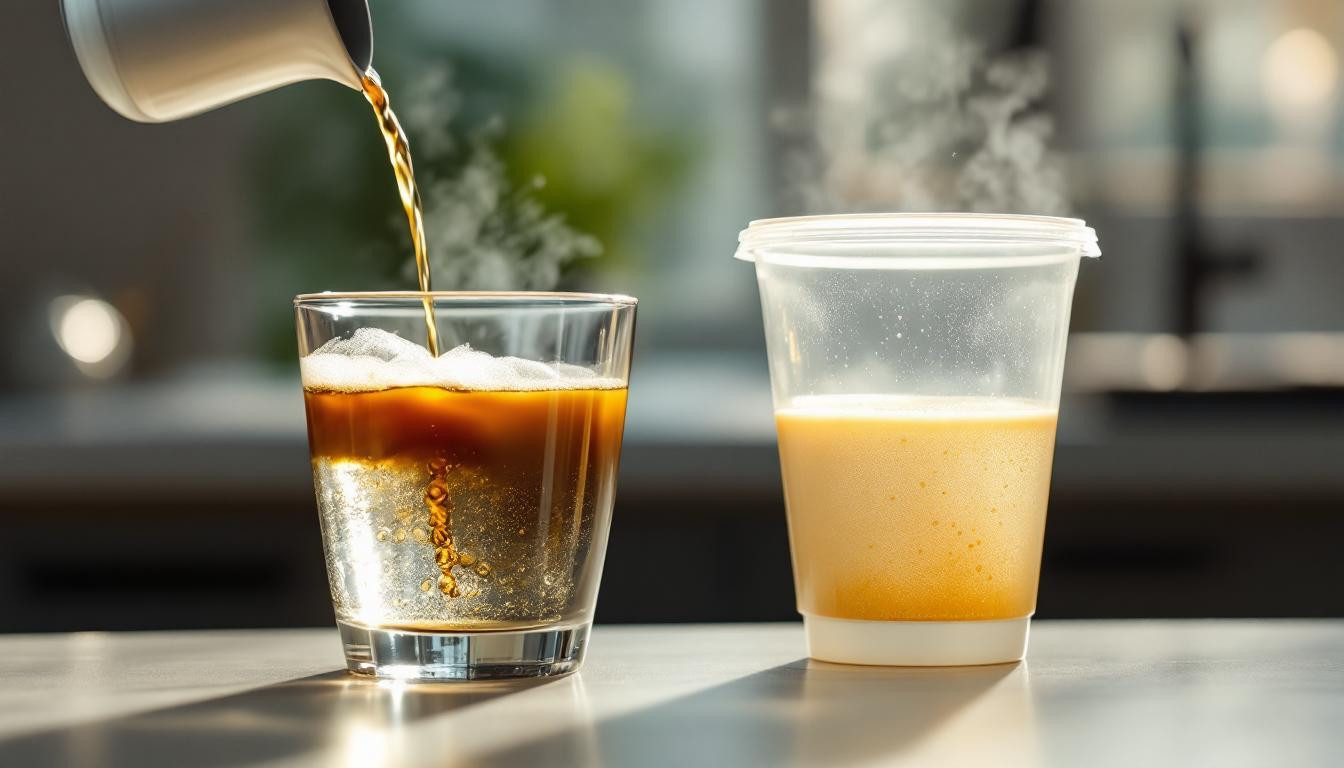What you drink from matters more than you think. Recent studies reveal that your choice of cup could expose you to up to 25,000 microplastic particles per year, potentially affecting both your health and the flavor of your favorite beverages.
How cup materials secretly transform your drinks
The relationship between cup materials and beverage properties extends far beyond simple containment. Dr. Elena Rodriguez, environmental toxicologist, explains: “The chemical interaction between your cup and beverage happens with every sip. Each material creates a unique environmental microclimate that alters temperature retention, flavor profiles, and potentially introduces compounds into your drink.”
Glass stands as the gold standard for chemical inertness. Unlike plastic alternatives, glass doesn’t leach chemicals or absorb flavors, making it ideal for those with sensitive palates or chemical sensitivities. However, its poor insulation means beverages cool quickly.
The ubiquitous plastic cup presents more complex considerations. Different types affect your drinks in distinct ways:
- Polystyrene (foam) cups offer excellent insulation but can release styrene into hot beverages
- PET plastic maintains carbonation well but degrades under heat and light
- Polypropylene provides better heat resistance but absorbs flavors over time
The hidden health impact in every cup
When Sarah started experiencing unexplained digestive issues, she never suspected her morning coffee routine. “Switching from plastic to ceramic cups eliminated the subtle chemical taste I hadn’t even realized was there. Within weeks, my symptoms improved dramatically.”
This transformation mirrors research findings showing that hot beverages in plastic cups can release microplastics and chemical compounds that may disrupt our body’s natural processes. These effects become particularly concerning for cellular repair and metabolic functions.
Beyond safety: flavor science and sensory experience
Cup material creates a sensory ecosystem that transforms your beverage experience. Think of your cup as a terrarium – it establishes specific conditions that either preserve or alter the intended flavor profile of your drink.
Nutritionist Dr. James Chen notes: “The interaction between cup material and beverages is particularly notable with acidic drinks like apple cider vinegar or citrus-infused waters, which can accelerate chemical leaching from inappropriate containers.”
For optimal flavor preservation and health benefits, consider these material-beverage pairings:
- Ceramic for coffee and tea (preserves complex flavor notes)
- Glass for wine, water, and vinegar-based drinks (maintains chemical integrity)
- Stainless steel for portable beverages (balances convenience with safety)
Making healthier choices for your daily sips
Understanding cup materials empowers you to make choices that enhance both beverage enjoyment and health protection. Start by evaluating your most frequent beverages and their containers. For hot drinks, ceramic or glass offers the purest experience, while stainless steel provides a practical on-the-go alternative.
Like forest bathing for stress reduction, the simple act of choosing appropriate drink containers can become a subtle yet powerful wellness practice. Your beverage container isn’t just a vessel – it’s an active participant in your health journey and sensory experience, influencing everything from flavor perception to cellular health with every sip you take.
